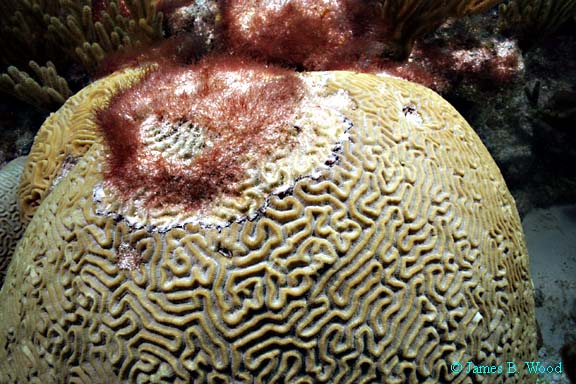Brain
Coral
(Diploria strigosa)
(Diploria strigosa)
By Joseph Evans
and
Dr. James B. Wood and Kim Zeeh - Editors
and
Dr. James B. Wood and Kim Zeeh - Editors
|
Brain
Coral
(Diploria strigosa) By Joseph Evans
and Dr. James B. Wood and Kim Zeeh - Editors |
